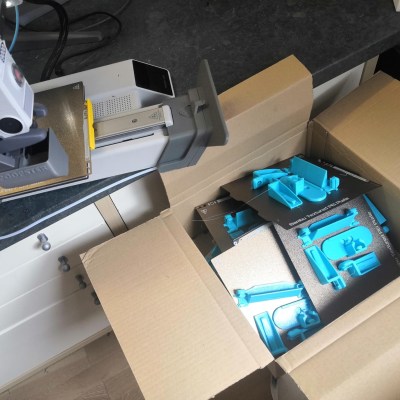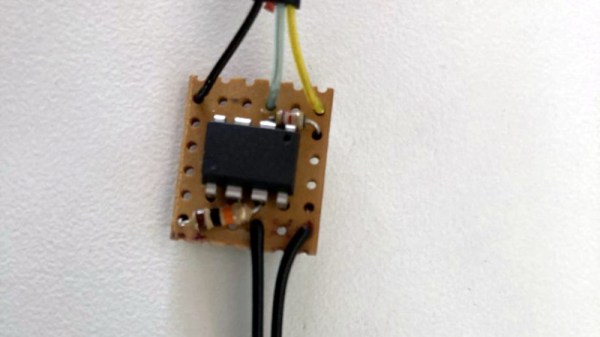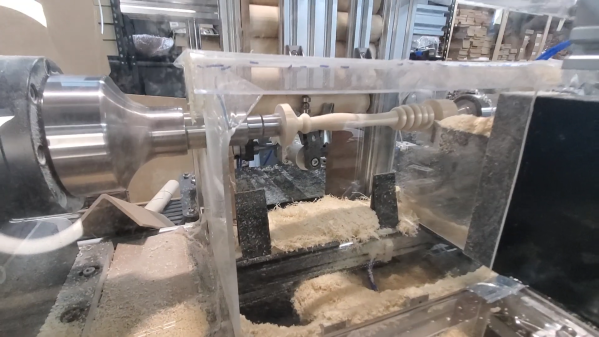[Andre Me] has long-standing interest in automating 3D print jobs, and his latest project is automating build plate changes on the Bambu A1 Mini.
 Here’s how it works: each build plate gets a sort of “shoe” affixed to it, with which attachments on the printer itself physically interact when loading new plates and removing filled ones.
Here’s how it works: each build plate gets a sort of “shoe” affixed to it, with which attachments on the printer itself physically interact when loading new plates and removing filled ones.
When a print job is finished, custom G-code causes an attachment on the printer to wedge itself under the build plate and peel it off until it is freed from the magnetic bed, after which the finished plate can be pushed towards the front. A stack of fresh build plates is behind the printer, and the printer slips a new one from the bottom when needed. Again, since the printer’s bed is magnetic, all one has to do is get the new plate to reliably line up and the magnetic attraction does the rest.
Some methods of automating print jobs rely on ejecting the finished parts and others swap the print beds. [Andre]’s is the latter type and we do really like how few moving parts are involved, although the resulting system has the drawback of requiring considerably more table space than just the printer itself. Still, it’s not at all a bad trade-off.
Watch it in action in the two videos embedded below. The first shows a time-lapse of loading and ejecting over 100 build plates in a row, and the second shows the whole system in action printing bowls in different colors. Continue reading “3D Printer Swaps Build Plates To Automate Print Jobs”


















